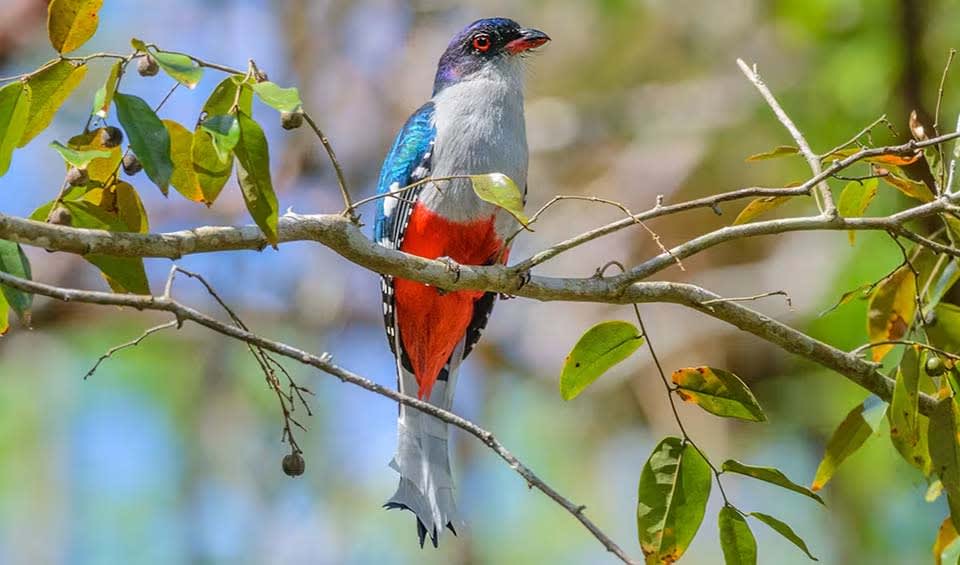Known locally as the Tocororo, the Cuban trogon is a stunning and culturally significant bird found exclusively in Cuba. As the country’s national bird, this trogon symbolizes the freedom and spirit of the Cuban people, largely because its vibrant plumage mirrors the colors of the Cuban flag.
The Cuban trogon’s striking appearance is one of its most notable features. The bird has a vivid green back, a white chest, and a bright red belly, creating a bold and colorful contrast. Its tail feathers are blue with white tips, adding to its eye-catching look. The head of the Cuban trogon is a deep blue, and its eyes are surrounded by a distinctive red ring, enhancing its expressive appearance.
One of the most characteristic aspects of the Cuban trogon is its call. The bird’s name, Tocororo, is an onomatopoeic reference to its call, which sounds like “to-co-ro-ro.” This unique call can often be heard echoing through the forests of Cuba, adding a distinctive soundscape to its habitat.
Cuban trogons inhabit a variety of forested environments across Cuba, including montane forests, evergreen forests, and secondary forests. They are also found in gardens and plantations near forests. These birds prefer dense, lush environments where they can easily find food and nesting sites. They are arboreal, spending most of their time in the canopy and middle layers of the forest.
Distribution
 Cuba
CubaAnything we've missed?
Help us improve this page by suggesting edits. Glory never dies!
Suggest an editGet to know me
Terrestrial / Aquatic
Altricial / Precocial
Polygamous / Monogamous
Dimorphic (size) / Monomorphic
Active: Diurnal / Nocturnal
Social behavior: Solitary / Pack / Herd
Diet: Carnivore / Herbivore / Omnivore / Piscivorous / Insectivore
Migratory: Yes / No
Domesticated: Yes / No
Dangerous: Yes / No




